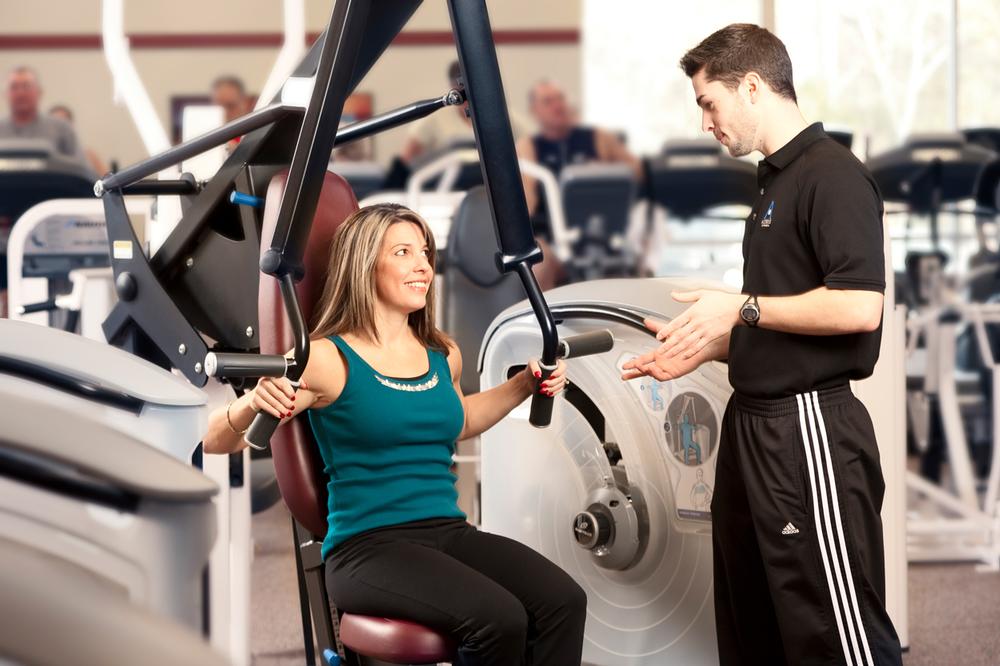features
Sales strategy: Lean & mean
Doug Werner outlines the powerful impact that the ‘Lean’ protocol can have on a health club’s sales process
The health club industry has come a long way in the past 30 years, from the intimidating spit and sawdust gyms of the early 80s to the 10,000sq m, all-inclusive ‘super clubs’ of the 21st century. During that time, operators have consistently benefited from advancements in equipment, programming, training, facility design, sales and marketing, and member services technology, with innovation and invention helping to overcome any challenges to profitability.
Recently, however, the combination of weak economic conditions and the proliferation of resilient competition across all sectors and price brackets within the market have made it harder than ever for clubs to differentiate themselves and grow. What then?
When all else fails, what are the options for improving profitability?
One obvious answer is to simply reduce operating expenses. Unfortunately this strategy frequently requires a leap of faith and can be fraught with guesswork. Done without precision, cost-cutting can easily backfire and have the reverse effect on profits: as many operators have experienced, operational decisions such as cutting payroll, delaying improvements to facilities, stretching supplies or reducing marketing spend can lead to a decline in member retention or acquisition and, with it, losses to the bottom line.
The Lean philosophy
So how can a service entity be more precise when trying to improve profitability through cost-cutting?
One methodology used with great success by thousands of manufacturing companies around the world is Six Sigma, a business discipline that focuses on ‘increased productivity through improved quality control’.
Using Six Sigma, manufacturers can closely analyse quality control – from parts and materials sourcing through to customer service – by using the knowledge of the production line personnel who actually do the work. This type of strategy goes back as far as Henry Ford and the Model T. More recently, firms like Toyota, Motorola, GM and even Coca-Cola have benefited dramatically from Six Sigma applications.
But what of companies that don’t actually manufacture anything? More specifically, how can health clubs benefit from the highly productive business principles epitomised by Six Sigma?
Healthtrax Fitness and Wellness in the US provides a great case study. Acknowledging the negative impact of an overly complicated membership sales system, which was hurting both sales productivity and sales associate retention, in December 2011 the health club operator turned its attention to a rapidly growing productivity philosophy known as Lean.
As defined by James Womack, author of Lean Thinking and founder of the Lean Enterprise Institute in Boston, US: “Lean is a set of business principles and tools used to create and deliver value as the customer defines it, while consuming the fewest resources possible, by fully utilising the knowledge, skills, passion and thinking of those who perform the work.” Put more succinctly, Lean improves productivity by eliminating waste and ridding an organisation of clutter, and is therefore essentially a non-manufacturing answer to Six Sigma.
What makes Lean unique to most companies is that the process does not rely on executives who are often far removed from the front line of the business, but on those who actually do the work day in, day out, at the coalface.
Following a highly structured and diligent team approach, Lean can be applied to nearly any organisation that relies on the systematic processing and flow of information, goods or services. With a strong focus on the elimination of wasted effort, procedures and resources, Lean can particularly benefit organisations with multiple management layers, operating systems or locations, and especially organisations that have experienced years of operational evolution.
Setting goals
The Lean transformation of a business – applying the Lean process to rid the organisation of operational clutter – begins with the designation of a Lean facilitator. Ideally this change agent would be someone who’s well trained in Lean transformation procedures, with a degree of familiarity with the client’s business and a successful track record with similar projects. Their main function is to protect the company’s Lean mission and corporate values, and to direct the process in accordance with Lean business principles and procedures. However, a good facilitator can also help identify appropriate productivity goals. These must be well defined, specific, and limited to one or two critical goals.
Common examples of productivity goals for health clubs are: improve membership sales productivity by x per cent, improve ancillary sales productivity by y per cent, or improve member services productivity by z per cent. By definition, an improvement in productivity can come as a result of higher output (sales, revenues, usage, etc), lower input (capital, expenses, time, etc) or a combination of both, so the process is not focused strictly on cost-cutting. In fact, the entire project can be jeopardised if staff perceive this to be simply a payroll reduction strategy.
The Lean transformation process then begins with a Value Stream Map (VSM) Charter which clearly articulates the problem, the Lean goals, and the areas of the organisation that have an impact on either one of these (see Healthtrax’s VSM charter on p52).
The VSM Charter is determined by the senior management team in advance of the Lean journey and is used to help guide the entire process from start to finish. As you will see, our main goal at Healthtrax was to reduce our people cost per new membership by 25 per cent, from an average of US$160 to an average of US$120.
Mapping the future
A team of employees deemed to be subject matter experts is then handpicked to conduct a VSM workshop, to begin the task of more closely analysing the problem as well as identifying the solution(s).
The selection of this team is one of the most critical steps in the entire process: each participant should be very committed to, and heavily engaged in, the process and highly motivated to achieve the desired results. The team should consist mostly of hands-on staff involved in all or most of the procedures to be reviewed, with varying degrees of experience, and should rarely include anyone from the executive management team, or anyone with much ownership over the existing standard work.
The value stream mapping process begins with the identification of the customer or the entity that will benefit most from the Lean transformation. This is not always an obvious choice. For example, if the goal is to improve membership sales productivity – as was the case at Healthtrax – then the ‘customer’ is quite likely the membership sales associate. The entire Lean project will then focus on all the operating factors that can affect the productivity of the sales associate.
The VSM team reviews each and every activity required to complete the standard work carried out by the sales associate within the existing sales process. A Current State Value Stream Map is drawn up to analyse the quality and effectiveness of each step currently used, and identify specific areas for improvement. This is the discovery part of the process.
Once the current state has been mapped, the VSM team then begins to map the Future State – the way the business would ideally like the process to work. This is where the fun and creativity begins! If the right team has been selected, the Future State VSM results in a remarkably improved process with little clutter or waste.
Delivering the future
Next, a Value Stream Plan is created which details each new process in the Future State VSM, and the goals and objectives of the Standard Operating Procedures (SOPs) which should deliver these processes.
One Kaizen manager – Kaizen is Japanese, meaning ‘change for the better’ – is then appointed for each of the new processes. Kaizen teams – as few as two or three people per team, and as many as 10 – are then created to support each manager, and charged with designing the new SOP to deliver each of the Future State processes.
These teams review the current state SOP for each step of the process, identify and eliminate waste, and through extensive discussion create a Future State SOP. Depending on the complexity of the SOP, a Kaizen can take as little as a few hours or as long as a few months – but eventually a well-defined, Lean SOP will be developed for each process in the Future State VSM. These are then tested, reviewed, tweaked and revised until the Kaizen team is satisfied with the deliverables. With a very high bias on action, the team motto during this entire process is: “Do not let perfect get in the way of better.”
For most companies, this will be the first time that SOPs have been designed mostly by ‘the field’ – the frontline staff – as opposed to the ‘ivory tower’ of management, and the resulting level of employee empowerment and buy-in is usually exceptional. The long-term execution of these SOPs then improves dramatically as a result of this empowerment dynamic.
Once all Kaizens have been tested and approved, a Report Out is scheduled for final approval from the executive management team, in which each new, Lean SOP is assessed for financial, legal, cultural and ethical compliance with company standards. Once they have been approved – with tweaking if need be – a Lean rollout of each is systematically designed and launched. Incomplete Kaizens continue to evolve and are launched as they are approved.
Living proof
Having identified a need to improve sales productivity and sales associate retention levels at the outset of the Lean project in December 2011, Healthtrax systematically implemented the full VSM/Kaizen process across its full network of 18 clubs. By April 2013, the following results had been achieved:
* Double digit improvement in sales closing rates
* Double digit improvement in the growth of sales
* Double digit improvement in sales productivity and costs (measured as the total sales hours per new club membership sold)
* Enhanced guest/new member point of sale experience, resulting in higher referral rates
* Improved new member induction process, resulting in improved retention
* Improved employee morale due to simplified and more user-friendly sales procedures and higher earnings through improved productivity
* A culture shift, which has developed a management team with a keen critical eye for lean improvement in all areas
At Healthtrax Fitness and Wellness’ most recent board meeting, CEO Ken Navarro summed up the company’s Lean sales journey to date: “At this point, the results we have experienced with Lean have far exceeded our most optimistic expectations. We will continue to use Lean business principles to help improve productivity in all other areas of our operation.”
Healthtrax VSM Charter
Problem statement
Healthtrax is convinced that its membership sales productivity suffers from an overly complicated and expensive sales process and sales management system. This challenge to productivity also affects sales associate earnings, morale and retention.
In-scope
* All 18 HF&W centres
* Marketing department
* Sales associate talent management
* Corporate overhead
Goal statement
Improve sales productivity, resulting in a 25 per cent reduction of ‘people cost per new’ – from 18-centre average of US$160 to US$120 per new membership.
Improve sales associate retention by 50 per cent in each centre for FYE 2012.
Out-of-scope
* Work-Fit
* Personal coaching
* Programming
Doug Werner is a fitness industry veteran with over 30 years’ club operations and equipment sales management experience, for the likes of Town Sports International and Nautilus. He is currently vice president of lean sales management for Healthtrax Fitness and Wellness in the US.
Email [email protected]






































































